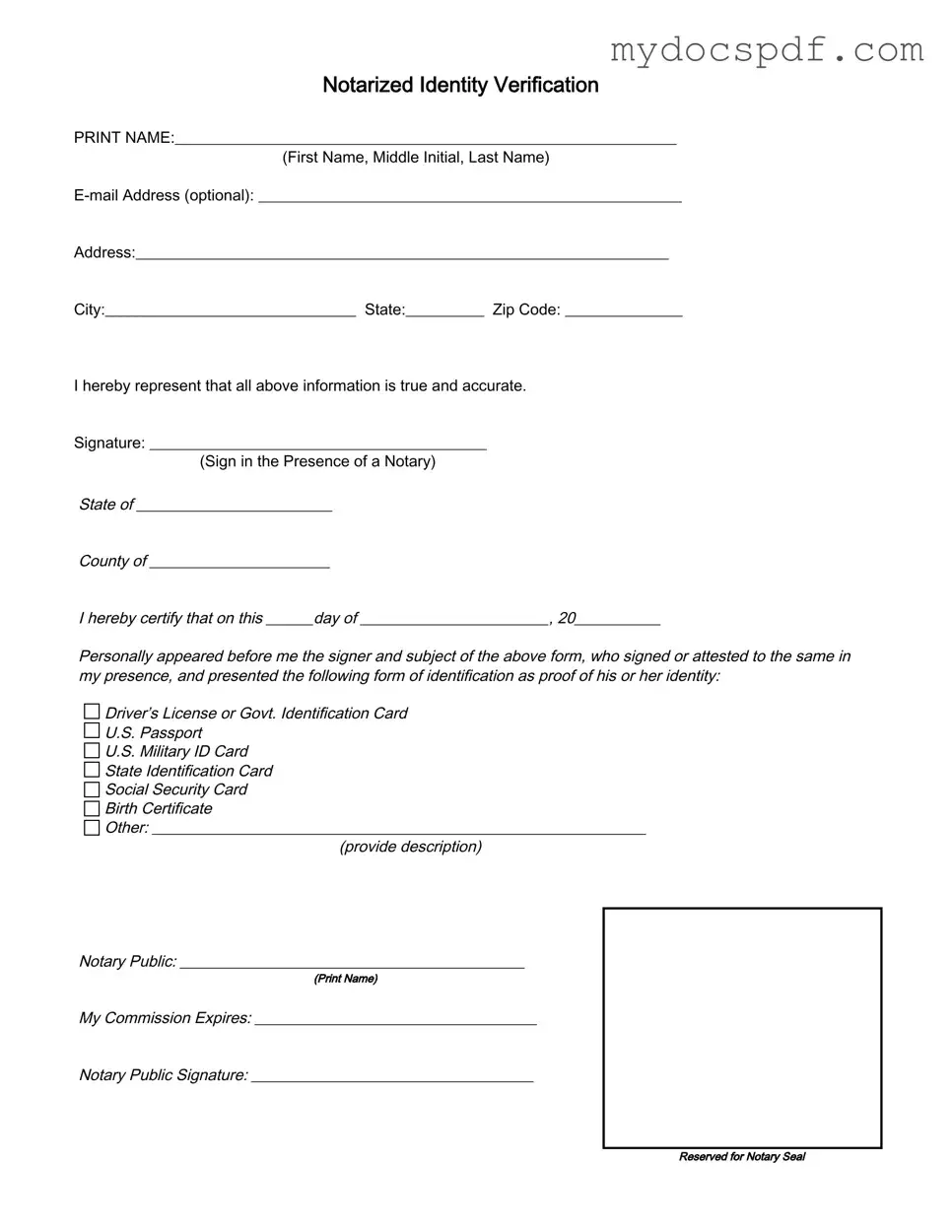Notarized Identity Verification
PRINT NAME:________________________________________________________________
(First Name, Middle Initial, Last Name)
E-mail Address (optional): ______________________________________________________
Address:____________________________________________________________________
City:________________________________ State:__________ Zip Code: _______________
I hereby represent that all above information is true and accurate.
Signature: ___________________________________________
(Sign in the Presence of a Notary)
State of _________________________
County of _______________________
I hereby certify that on this ______day of ________________________, 20___________
Personally appeared before me the signer and subject of the above form, who signed or attested to the same in my presence, and presented the following form of identification as proof of his or her identity:

 Driver’s License or Govt. Identification Card
Driver’s License or Govt. Identification Card

 U.S. Passport
U.S. Passport

 U.S. Military ID Card
U.S. Military ID Card

 State Identification Card
State Identification Card

 Social Security Card
Social Security Card

 Birth Certificate
Birth Certificate

 Other: _______________________________________________________________
Other: _______________________________________________________________
(provide description)
Notary Public: ____________________________________________
(Print Name)
My Commission Expires: ____________________________________
Notary Public Signature: ____________________________________
Reserved for Notary Seal



 Driver’s License or Govt. Identification Card
Driver’s License or Govt. Identification Card
 U.S. Passport
U.S. Passport
 U.S. Military ID Card
U.S. Military ID Card
 State Identification Card
State Identification Card
 Social Security Card
Social Security Card
 Birth Certificate
Birth Certificate
 Other: _______________________________________________________________
Other: _______________________________________________________________